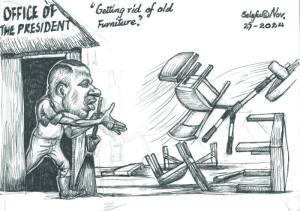As the fog cleared and clarity shone forth, it became clear that the ghostlike Boo symbolised aspects of the town’s past, such as intolerance, inequality and slavery.
And so it was, the conclusion of a literary masterpiece, ingrained within the budding synapses of Mrs Henderson’s Grade 6 class, the sad truth of an unjust world. Harper Lee’s classic To Kill A Mockingbird sparked an insatiable yearning within me for the written word.
The themes of racism and injustice priming my young mind for the sometimes sad realities of a cruel world. While Lee’s masterpiece evoked a wide spectrum of emotions in all of us, it also supplied some of the coolest names of any characters I have come across. That would be you Boo Radley and X Billups. A glance at the clock revealed its 2 hands pointing at the 3 and 6 in a close to perfect 90 degree angle. The flawless geometry signalled 3:30 pm and the conclusion of our educational day.
The mood lifted markedly as we arose from our seats and the world of Atticus Finch and Scout was swallowed by our ravenous knapsacks. We gathered in the hallway to put on our winter jackets, boots and hats and gloves. Without a care in the world and our bodies fuelled by endless adrenaline, we exploded through the double doors into the waiting Canadian winter. The frosty air banishing the last of our lethargy. Nature’s brilliant strokes had painted the earth white, with the pale blue sky harbouring the runny yellow of the setting sun. The snow crushed beneath our running boots as we made our way to our school’s ice rink. As two hastily constructed teams were chosen, this outdoor ice palace served as our battleground.
A spirited ice hockey match ensued filled with passionate banter and some light hearted trash talk. Boys will remain boys. As we dashed back and forth with white breath expelled into the cool approaching evening, the intensity escalated. The game was tied. The sun had bade farewell and we all knew that meant it was time to go home. When the sun went dark and the streetlights came on, none of us were allowed to be outdoors. The customary yell arose as we all competed. “Next goal wins it”. With the tension dialed up to atmospheric levels, you’d think we were playing for the ultimate prize in ice hockey, the Stanley Cup. I’m not sure who won the game, because it could have been anyone on any given day, but it doesn’t really matter. As one faded back and took a snapshot of the scene, it would be filled with extreme joy, boundless youthful spirit and camaraderie. The French call it joie de vivre. And we had it in spades. Isn’t that what life is all about? With the sun now firmly illuminating somewhere else beyond our horizon, we departed to journey home. I walked with my friends who lived surrounding my house. The crowd dispersed as we ventured along and homes were reached. The wonderful scent of our forthcoming meal greeted me as I entered our residence. My mother, a gifted chef would bestow a glorious meal, but first I knew I would be on the receiving end of a good talking to.
If you’ve been paying attention you’d have inferred that I had violated my curfew. And as I listened to her comments about safety, my primitive worldview told me she was overreacting. After a decade or two, I now understand. Because, you see, I am now the parent, and I am aware of the hazards of being a child alone in the dark outside. After a delicious supper in the company of my parents and sister Sadia, I did my homework and then watched a television show with my family. As I lay my head on the pillow, I felt happy, contented and slept peacefully with dreams of scoring the winning goal and lifting the Stanley Cup while playing for my beloved Toronto Maple Leafs. I was 12.5 years old.
How times have changed. In 2023, twelve and a half years old is the average age at which a child opens a social media account. According to growing research, the more time spent on social media, the more likely a person is to develop mental health symptoms such as anxiety, loneliness and hopelessness. Furthermore, one recent study found that high levels of social media use over a four-year period were connected with higher depression amongst middle and high school students. One of the main reasons social media can contribute to anxiety and depression is that it creates an unrealistic standard of comparison. People tend to present their best selves on social media, which can lead others to believe that their own lives are inferior. This constant comparison to others can lead to feelings of inadequacy and low self-esteem, which can in turn contribute to anxiety and depression. Furthermore, social media can be a breeding ground for cyberbullying. People can hide behind the anonymity of the internet and say hurtful things without consequences. This can lead to feelings of isolation, fear and anxiety.
We know that using screens directly impacts your ability to get good quality sleep. The bottom line is technology keeps you awake. The artificial light arouses your brain and disrupts the production of melatonin to induce sleep. While social media has numerous benefits, it is important to restrict social media and screen time and be aware of its affects on mental health in order to minimise the drawbacks. While I can now follow my beloved Toronto Maple Leafs on social media and even learn what Auston Matthews’ favourite movie is, nothing surpasses speeding down the ice in elementary school and scoring the game-winning goal. But, make sure to arrive home before the streetlights turn on.





